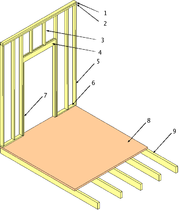Knowing what to do
Contents
Knowing what to do
This section deals with knowing what to do after you have assessed the literacy and numeracy skills of your learners and have the results. You will also know the level of the literacy and numeracy demands of your course and vocation.
If you see there is a gap between learner skills and the course/vocational demands, then you need to plan how you are going to bridge that gap. The gap can be bridged by deliberate acts of teaching (DATs) of literacy anad numeracy alongside the delivery of vocational content.
Deliberate acts of teaching (DATS) literacy and numeracy skills
Explore the resources on the National Centre for Adult Literacy and Numeracy website
The Learning Progressions for literacy and numeracy provide a framework that shows what adult learners know and can do at successive points as they develop their expertise in literacy and numeracy learning. This framework can be used as a guide to identifying the next steps for adult learners. Each progression covers a particular aspect of learning. The Learning Progressions booklets or webpages contain many ideas for teaching and learning activities that have been developed by L & N experts. Hard copies are available in Otago Polytechnic's Learning Centre (F121) or use the online versions, clicking on the side arrows to explore how to use the resource and find learning activities.
This resource Guidelines for strengthening adolescents' literacy skillsalso contains useful strategies to strengthen reading skills, particularly if you are working with young people This Ako Aotearoa resource includes videos of students talking about their concerns about academic reading, and strategies for addressing these http://akoaotearoa.ac.nz/ako-hub/ako-aotearoa-central-hub/cracking-reading-code
Some examples of DATs from Otago Polytechnic
- Here is video outlining how a reading DAT was embedded into a lesson for Automech Youth Guarantee students. The video discusses students' initial assessment results for reading, and how these have informed teaching.
- Here is an example of a numeracy resource that was created by Adrienne Dearnley to support Vet Nursing students with calculations Rehydrating an Animal, Part One. There are more examples of numeracy resources in the Staff Support for Embedding Numeracy Moodle course Anyone can log in to this site as a guest
Some examples of lesson plans and templates
- Look at some lesson plans from your course and decide which ones are suitable for including literacy or numeracy activities, or "Deliberate Acts of Teaching" literacy and numeracy (DAT's). Here is a link to a blank lesson plan template.
- Click on this link for an example of a vocational course lesson plan with embedded literacy activities.
- Here is a link to some general lesson planning teaching tips. If you wish to learn more about lesson planning, go to the module on lesson planning in the GCTLT.
Other resources for teachers
- The Otago Polytechnic Moodle courses Staff Support for Embedding Numeracyand Staff Support for Embedding Literacy are repositories for teaching methods, strategies and activities for embedding literacy and numeracy. Please browse the content for activities useful for your context and learners. Anyone can log in as a guest.
- Ako Aotearoa describe the embedding of literacy and numeracy in the context of good teaching practice in their publication "Signpost". If you are fairly new to teaching, you may find this resource particularly useful.Embedding literacy and numeracy is specifically covered on page 12. Signposts
Some websites for self-directed study for students
- Activites and websites for improving literacy and numeracy This page in wikieducator provides links to self -directed learning for students.
- Websites for improving numeracy Self-directed learning for numeracy skill practice.
- [1] Improving essay writing skills
- An interactive site developed for students studying in the Faculty of Science, Engineering and Technology at Victoria University - Australia, who want to improve their writing skills for academic and professional purposes. [2]
- Websites for improving your reading skills
- Pathways Awarua is an interactive, self-paced programme that has been specifically developed to link with New Zealand's Literacy and Numeracy for Adults Assessment Tool and the learning progressions.The numeracy section of Pathways caters for learners from step 2-5 and the reading section caters for learners at step 2-3, however, some learners at step 4 may also find it useful. Lecturers need to register and complete self-paced, online professional development , before setting up access for their learners (This takes less than an hour.)

